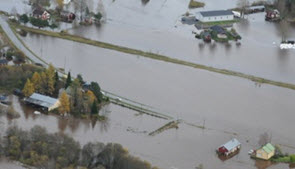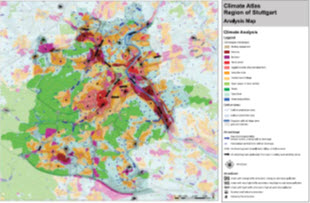Table of contents
- Acknowledgements
- Executive summary
- Objectives, intended users and context of this report
- Outline of this report
- Methodological approach
- Lessons learned from collaborating with member countries through the self-assessment survey
- 1. Rationale for public intervention on adaptation
- 2.1. Key Topic 1: Public and policy awareness of the need for adaptation
- 2.1.1. Awareness of the need for adaptation: what does this include?
- 2.1.2. Findings from self-assessment survey
- 2.1.3. Examples from countries
- 2.1.4. Discussion of findings
- 2.2. Key Topic 2: Knowledge generation and use
- 2.2.1. Knowledge generation and use: what does this include?
- 2.2.2. Findings from self-assessment survey
- 2.2.3. Examples from countries
- 2.2.4. Discussion of findings
- 2.3. Key Topic 3: Planning adaptation
- 2.3.1. Planning adaptation: what does this include?
- 2.3.2. Findings from self-assessment survey
- 2.3.3. Examples from countries
- 2.3.4. Discussion of findings
- 2.4. Key Topic 4: Coordination of adaptation
- 2.4.1. Coordination of adaptation: what does this include?
- 2.4.2. Findings from self-assessment survey
- 2.4.3. Examples from countries
- 2.4.4. Discussion of findings
- 2.5. Key Topic 5: Stakeholder involvement
- 2.5.1. Stakeholder involvement: what does this include?
- 2.5.2. Findings from self-assessment survey
- 2.5.3. Examples from countries
- 2.5.4. Discussion of findings
- 2.6. Key Topic 6: Implementation of adaptation
- 2.6.1. Implementation of adaptation: what does this include?
- 2.6.2. Findings from self-assessment survey
- 2.6.3. Examples from countries
- 2.6.4. Discussion of findings
- 2.7. Key Topic 7: Transnational cooperation
- 2.7.1. Transnational cooperation: what does this include?
- 2.7.2. Findings from self-assessment survey
- 2.7.3. Examples from countries
- 2.7.4. Discussion of findings
- 2.8. Key Topic 8: Monitoring, reporting and evaluation
- 2.8.1. Monitoring, reporting and evaluation (MRE): what does this include?
- 2.8.2. Findings from the self-assessment survey
- 2.8.3. Examples from countries
- 2.8.4. Discussion of findings
- 3. The evolving agenda for national adaptation in Europe
- 4. Glossary
- 5. Acronyms
- 6. References
2.6.3. Examples from countries
23 European countries reported examples on implemented adaptation actions. The following selected cases present a diversity of approaches from various European countries. .More examples on adaptation actions can be found at the European Platform CLIMATE-ADAPT (hosted by the EEA).

Source: Unto Tapio (http://www.ymparisto.fi/en-US/Water_and_sea/Floods)
Cooperation for flood management
Finland
(1) Adaptation goal:
Decrease the impacts caused by floods and heavy rain and
further increase the preparedness for such extreme events.
(2) Adaptation actions:
Key elements of successful flood management include preparatory work, early warning systems, communication and cooperation between different authorities. A significant number of flood protection structures have been established in recent decades to flood prone areas. More funding has been allocated for the preparation of flood banks/terraces, pumping stations and roads, and automation of observation stations. The LUOVA warning system produces an early warning about possibly dangerous flooding several days in advance. The Regional Centres for Economic Development, Transport and Environment along with municipalities and municipal rescue services are responsible for the anticipatory action (e.g. regulation of lake water levels, preparation for rescue activities). Up-to-date information of the flooding situation is provided on the Finnish Environment Institute web pages, including maps as well as further instruction and warnings for the general public. The Finnish Transport Agency also provides information and controls roads and traffic in flooding areas.
(3) Further information/contact details: http://www.mmm.fi/attachments/mmm/julkaisut/julkaisusarja/5g45OUXOp/MMMjulkaisu2005_1a.pdf

Information to deal with heat stress
France
(1) Adaptation goal:
Inform the broad public on how to prevent negative health
consequences in the case of heat waves.
(2) Adaptation actions:
As reaction to the heat wave in 2003, France has adopted a national heat wave plan in 2011. The Ministry of Health has published recommendations to be implemented in case of heat waves as well as developed various communication formats to inform the broad public on possible measures to be taken. Besides printed formats such as brochures, TV spots were created as well as a heat wave-hotline installed.
(3) Further information/contact details:

Multi-usable park
Denmark
(1) Adaptation goal:
Combine climate change adaptation with other uses.
(2) Adaptation actions:
In September 2012, the Danish Minister for the Environment, Ida Auken, opened the Rabalder Park on the Musicon site (a new creative and educational hotspot) in Roskilde on Zealand. The park sets new standards for combining climate change adaptation measures and specialised recreational installations. The unique thing about Rabalder Park is that although the area is primarily for storm water drainage, it also serves as a skate-park for children and young people.
The idea behind the installation is that during cloudbursts the area will constitute a number of flood-retention basins which together can hold up to 23,000 cubic metres of water. This will retain the water in the basins, and avoid flooding roads and basements in adjoining properties. However, when heavy rain does not fall, as mentioned above, the area will act as a skate-park for everything from skateboards and BMX bikes to barbecues.
(3) Further information/contact details:

Urban climatic map for the city of Stuttgart
Germany
(1) Adaptation goal:
Decrease the cities' vulnerability towards heat.
(2) Adaptation actions:
Stuttgart has a long tradition of incorporating urban climate concerns into its planning. Situated in a valley, the city of Stuttgart was forced early on to think about how fresh air can be ensured even in unfavorable weather conditions. Increasingly hot summers at the beginning of the new century have also led the city to counteract heat problems. For this reason, the city introduced a package of measures that are mostly borne by the city’s own funds. The main approach consists in incorporating urban climatic factors into planning. It focuses on the preservation and expansion of green areas as well as the assurance of fresh air corridors and heat moderating areas.
Good practice in this case means that the city integrated the local climate strategy in their land use planning. Stuttgart already implemented effective measures on a low budget approach. The local climate strategy is a long-term task for the city of Stuttgart that requires intensive cooperation between the cities authorities.
(3) Further information/contact details: City of Stuttgart
http://www.sed.manchester.ac.uk/architecture/research/csud/outputsresources/isocarp-hebbertwebb.pdf


